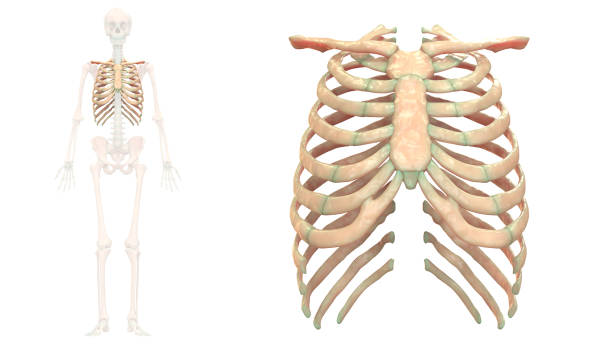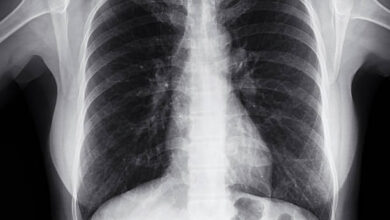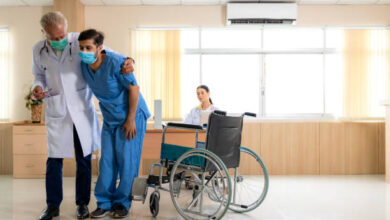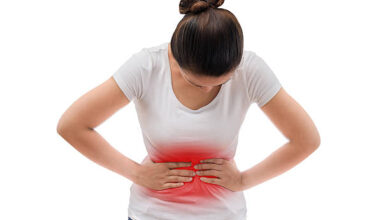What is the definition of Ribs in the human body?

Ribs are a wonderful piece of the human body structure, giving it indispensable capabilities and underlying honesty. Be that as it may, what is the genuine meaning of ribs in the human body? How about we dive profoundly into the entrancing universe of our body’s physical marvels.
The Definition and Anatomy of Human Ribs
- With regards to human life systems, ribs are long, circular segment-forming bones that make up the ribcage.
- A run-of-the-mill human body out of 24 ribs, coordinated into 12 balanced sets. These matches with the spine and enclose the chest pit. The main seven sets of ribs to as “genuine ribs.” These ribs straightforwardly get together with the sternum, or breastbone, by means of a scaffold of costal ligament. The resulting three sets are called “misleading ribs.” In contrast to the genuine ribs, these associate with the sternum in a roundabout way, by joining to the ligament of the seventh rib. The last two sets are recognized as “drifting ribs,” as they don’t interface with the sternum at all.
-
Each rib is joined to the spine at the back, framing a defensive enclosure around the thoracic cavity. The ribs, along with the sternum and the thoracic vertebrae, give a powerful construction to the chest. They give security, keep up with the state of the chest, and are engaged with the course of relaxing.
- The ribcage is certainly not an inflexible design. The associations between the ribs and the sternum are adaptable, permitting the ribcage to extend and contract while relaxing. The plan and arrangement of the ribs, working together with the muscles that interface them, give the important adaptability to respiratory developments and the solidarity to protect the body’s imperative organs from outside powers.
- The exceptional life systems of the ribs and their essential job in our important physical processes make them a fascinating area of concentration inside human life structures. Despite the fact that the count and design of ribs are by and large reliable among people, there can be slight varieties impacted by hereditary variables. A few people could have an extra rib, named a cervical rib, situated close to the neck. While such varieties are, for the most part, harmless, understanding them can be vital to customized clinical medicines and proactive medical care.
The Role of Ribs in Protecting Vital Organs
The ribs act as cutting-edge protection for the body’s most vital organs. Settled inside the thoracic pit, our heart, lungs, and primary veins require areas of strength for an adaptable boundary against likely damage. That is where the ribs step in.
- Their semi-round, interconnected structure is a safeguard that monitors these fundamental organs. The place of the ribs, alongside the muscles that encompass them, circulates and assimilates the effect of outer blows or wounds. This dispersion of power forestalls direct injury to the organs inside.
- Consider the ribs the body’s regular defensive layer. Like a suit of middle-age plate reinforcement, the ribcage, complete with its adaptable joints, goes about as a defensive layer that changes with our body’s developments while standing guard from outside dangers. The ribs’ solidarity lies in their numbers and game plan. Exclusively, they might be helpless to crack; however, together, they structure a considerable safeguard for the body’s center.
- Be that as it may, security isn’t the ribs’ only capability. The spaces between the ribs additionally take into consideration the entry of nerves, veins, and muscles. This empowers consistent correspondence between different pieces of the body and aids the productive working of our interior frameworks.
- From safeguarding the heart, the body’s powerful siphon, to protecting the fragile tissues of the lungs, the ribs serve a central job in shielding our body’s essential parts. In that capacity, understanding the defensive capability of the ribs is an urgent part of human life and wellbeing.
Figuring out the Capability of Ribs in Breath
Reviving each second, our ribs have a huge part to play in the demonstration of breath. At the point when we calmly inhale, the muscles situated between the ribs, known as the intercostal muscles, get a move on. These muscles agree and cause the ribcage to lift upwards, prompting an expansion in the size of the thoracic pit. This extension causes a drop in pressure, permitting the lungs to swell and air to be attracted, a cycle known as inward breath.
- The ribs and intercostal muscles work in a delightfully synchronized way. As the intercostal muscles unwind, the rib confine get back to its unique position, decreasing the volume of the thoracic hole. This lessening in volume causes an expansion in pressure, provoking the lungs to pack and push the air out in a cycle known as exhalation.
- This unique development of the ribcage is a characteristic piece of each and every breath we take. The adaptability of the ribcage, because of the cartilaginous joints associating the ribs to the sternum, works with this steady development and compression. This versatility of the ribs gives the space important to the lungs to change in size during every breath while keeping up with the defensive walled area for the heart and lungs.
- Ribs are not simply static bones; they are dynamic members in our body’s respiratory framework. Each inward breath and exhalation we make includes a sensitive, composed dance between the ribs and the encompassing muscles, empowering us to take in the oxygen we want to get by and eliminate the side-effects we don’t. It’s a fundamental capability that the vast majority of us underestimate, yet it highlights the basic job ribs play in our day-to-day routines.
The Job of Ribs in Stance and Backing
Beside their defensive and respiratory jobs, ribs additionally contribute altogether to the human body’s primary arrangement and strength. The plan and robustness of the ribcage empower it to go about as an essential point of support in supporting our upstanding position. By joining to the vertebral segment or the spine, the ribs structure a vigorous system. This system gives important strength and backing to the chest area, permitting us to keep an erect stance.
- Moreover, the ribcage’s plan works with equilibrium and movement. The shape and direction of the ribs help in the body’s weight dispersion, guaranteeing strength during development. This usefulness turns out to be especially evident when we participate in exercises requiring body exciting bends in the road or while conveying weighty items. In these situations, the unbending nature of the ribcage helps with keeping up with the body’s balance.
- The ribs additionally act as an anchor for various muscles. Muscles joined to the ribs incorporate not just those straightforwardly engaged with breath, like the intercostal muscles, but additionally ones that assume a part in the development of our arms. These muscle connections to the ribcage license an extensive variety of arm developments, from arriving above to swinging sideways.
- Basically, the ribs are central to protecting the stance and offering actual help. They are fundamental to keeping up with the body’s structure, working with development, and filling in as a connection site for different muscles. In that capacity, the wellbeing and strength of the ribs are imperative in guaranteeing productive body work, equilibrium, and versatility.
The Importance of Keeping Ribs Healthy
- While the ribcage is versatile by plan, it isn’t resistant to problems or medical problems. Rib-related conditions can go from cracks because of actual effect to aggravation as costochondritis, which principally influences the rib ligament, causing extreme chest torment. At times, harmful cells from other body parts can spread to the ribs, prompting metastatic malignant growth of the rib bones. These circumstances can make one think twice about ribs’ defensive, respiratory, and postural capabilities and consequently require quick clinical consideration.

-
Breaks are among the most well-known rib-related wounds, normally brought about by sports-related mishaps, falls, or vehicle crashes. They introduce themselves through side effects like sharp torment while breathing, delicacy around the broken region, and noticeable swelling.
- Costochondritis, then again, is a condition that presents as chest torment because of irritation of the costal ligament. This is the connective tissue that joins the ribs to the sternum.
The aggravation is many times exacerbated by active work or strain on the area and can be extreme to emulate the side effects of a respiratory failure.
-
Notwithstanding breaks and costochondritis, the ribs can likewise impacted by malignant growth, explicitly bone disease, or auxiliary bone malignant growth, which alludes to disease cells that have spread to the rib bones from different regions of the body. Side effects frequently incorporate diligent agony, areas of delicacy, and conceivable enlargement.
- Rib sicknesses and problems, while concerning, can be really overseen and treated with early analysis. Consequently, it is critical to look for brief clinical consideration if encountering industrious agony, inconvenience, or other strange side effects connected with the ribs. Treatment plans will change in view of the particular condition and its seriousness, going from tormenting the board and exercise-based recuperation to careful mediation in additional serious cases. It’s memorable and fundamental that a solid ribcage isn’t just critical for by and large body construction and capability, yet it likewise assumes a crucial part in safeguarding our most essential organs.
The Evolution and Variations in Rib Structure
Supporting the sufficiency of our ribs is principal given the fundamental work they play in our overall prosperity and thriving. A functioning way of life, joined by a fair eating regimen, assumes a crucial role in such a manner. Customary actual work, especially practices centered on further developing stance and reinforcing the chest area, can upgrade rib wellbeing. This incorporates exercises like swimming, Pilates, and yoga, which advance adaptability and fortify the intercostal muscles that aid breath and rib development.
Sustenance is another key variable. Consuming an eating regimen abundant in calcium and Vitamin D can assist with keeping up serious areas of strength for the bones, including the ribs. Food sources high in these supplements, similar to dairy items, mixed greens,




5 Comments